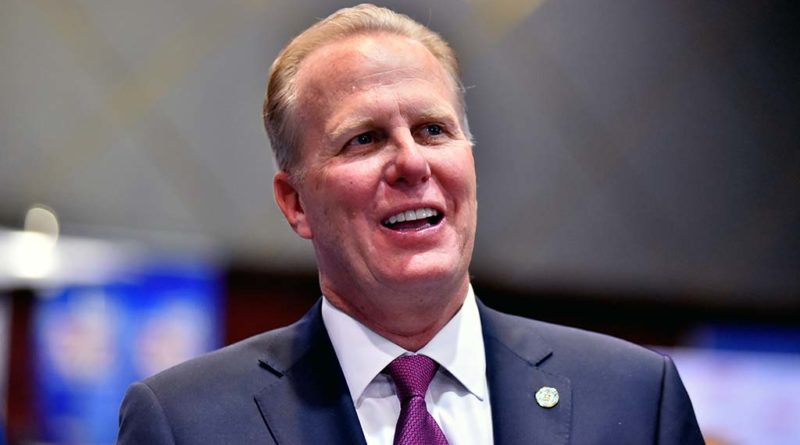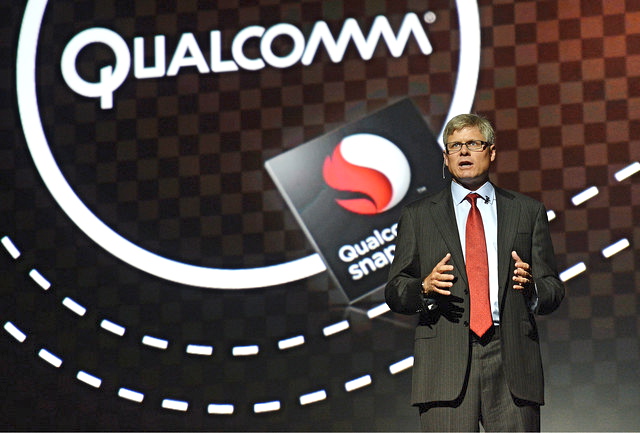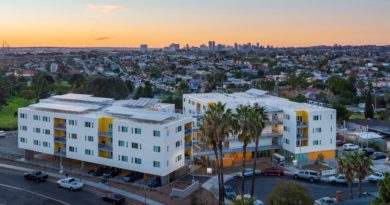Daily Business Report: Monday, Aug. 9, 2021
Faulconer hopes his action on
homelessness will overshadow his failure
By Lisa Halverstadt | Voice of San Diego
As he eyes a run for governor and tries to cement his legacy as San Diego mayor, Kevin Faulconer is likely to point to one major claim about his time here: that he reduced homelessness.
He’s already touting the statistics and actions. But if historians and voters statewide look at both, they’ll find some inconvenient context and detractors.
Faulconer made homelessness his top priority nearly four years into his tenure after a deadly hepatitis A outbreak terrorized San Diego’s homeless population, dramatically increasing both service offerings and police force to address the problem. He made an unprecedented decision to move homeless San Diegans into the Convention Center when the pandemic set in, and then permanently house hundreds who stayed there, moves he considers among his foremost achievements.
While other large California cities have in recent years reported spikes in homelessness, San Diego’s 2020 point-in-time count documented a 4 percent year-over-year overall drop in homelessness in the city, and a more substantial 12 percent decrease in San Diegans living on the street. There are also far fewer tents and makeshift shelters on downtown streets than there were four years ago.
“What I’ve tried to do is take out the stigma that says providing homeless services is a bad thing,” Faulconer said last week, reflecting on his work on homelessness. “It helps people. It makes a difference. And we’ve seen the results on our streets.”
But Faulconer was also reluctant to take a leading role in tackling the city’s homelessness crisis before it finally exploded into a health disaster for which some advocates will never forgive him.
PHOTO: Kevin Faulconer. Photo by Chris Stone
San Diego Tourism Marketing District allocates
$28 million in grants for tourism programs
The San Diego Tourism Marketing District (SDTMD) hopes to boost the city’s tourism recovery with $28 million in funding allocated for destination marketing programs in Fiscal Year 2022, which started July 1.
San Diego Tourism Authority (SDTA), the city’s destination marketing organization, remains SDTMD’s primary beneficiary and will receive approximately $26.6 million. An additional $1.6 million will support 12 tourism generating events including Olympic-style athletic competitions, major youth soccer tournaments, food and wine festivals, cultural programs and more.
Established in 2008, SDTMD collects a small assessment on room nights from city hotels with 70 rooms or more. These assessments are designated for the sole purpose of funding tourism marketing. Events receiving funding from SDTMD in FY22 include California State Games, San Diego Bayfair Thunderboats, San Diego Bay Food + Wine Festival, Wonderfront music festival, Best Coast Beer Fest, La Jolla Concours D’Elegance, U.S. Police and Fire Championships, San Diego Crew Classic, San Diego Holiday Bowl and elite ECNL boys’ and girls’ soccer tournaments.
Collectively, these local events are projected to drive approximately 115,000 room nights to generate over $21 million in room night revenue in addition to TOT for the city and visitor spending at our restaurants, retail shops and other local businesses.
SDG&E customers to receive nearly
$70 in bill credit over two months
This August and September, San Diego Gas & Electric (SDG&E) residential customers will see their electricity bills reduced by $34.60 each month – or a total of about $69.20 over two months, thanks to the California Climate Credit program designed to fight climate change.
The credit is from a state program that requires power plants, natural gas providers, and other large industries that emit greenhouse gases to buy carbon pollution permits. The credit on customers’ bills is their share of the payments from the state’s program.
Recognizing that many customers see their bills spike during summer months due to use of air conditioning, SDG&E petitioned the California Public Utilities Commission a few years ago to change the timing of the electric portion of the Climate Credit to August and September. In the past, the electric credit was applied in April and October.
Residential customers with natural gas service received the natural gas portion of the California Climate Credit – $17.86 – in April.
There is no action required to receive the credit.
New Master’s Degree offers international
view of business development
Designed for students seeking careers in the international sphere, San Diego State University’s Fowler College of Business has launched a master’s degree in global business.
The Master of Science in Global Business Development (MSGBD) program has admitted 13 students from five continents into its inaugural cohort, which will begin this fall and focus on global sales and business development.
Martina Musteen, SDSU management professor and co-director of the program, said it will offer a “combination of courses and learning experiences specifically designed to instill skills and knowledge for global business development and sales” unlike those of conventional graduate international business programs.
SDSU marketing professor and department chair Heather Honea serves as the program’s co-director and describes it as the “master’s in business for the 21st century.”
Graphic warning labels on cigarette
packaging changes perception
Purchase a pack of cigarettes in Australia and be prepared to be accosted with graphic warning labels depicting the dangers of tobacco use — including images of gangrene of the foot, a newborn with a breathing tube and throat cancer.
“Graphic warning labels are used in more than 120 countries to counter marketing that promotes cigarette smoking. We wanted to know what effect such cigarette packaging would have on United States smokers,” said David Strong, professor at the Herbert Wertheim School of Public Health and Human Longevity Science at University of California San Diego.
In a paper published online in JAMA Network Open on Aug. 4, 2021, Strong and colleagues at UC San Diego Moores Cancer Center, California State University San Marcos, San Diego County Public Health Services, and San Diego State University, demonstrated that graphic warning labels are effective reminders of the negative health consequences of smoking.
Genomatica raises $118 million for bio-based materials
San Diego-based Genomatica, which makes bio-based alternative to key chemicals, recently raised $118 million led by Novo Holdings, bringing the firm’s total funding to $388 million. Genomatica now aims to scale up production to help companies make sustainable products from athletic wear to carpet to personal care and more.




